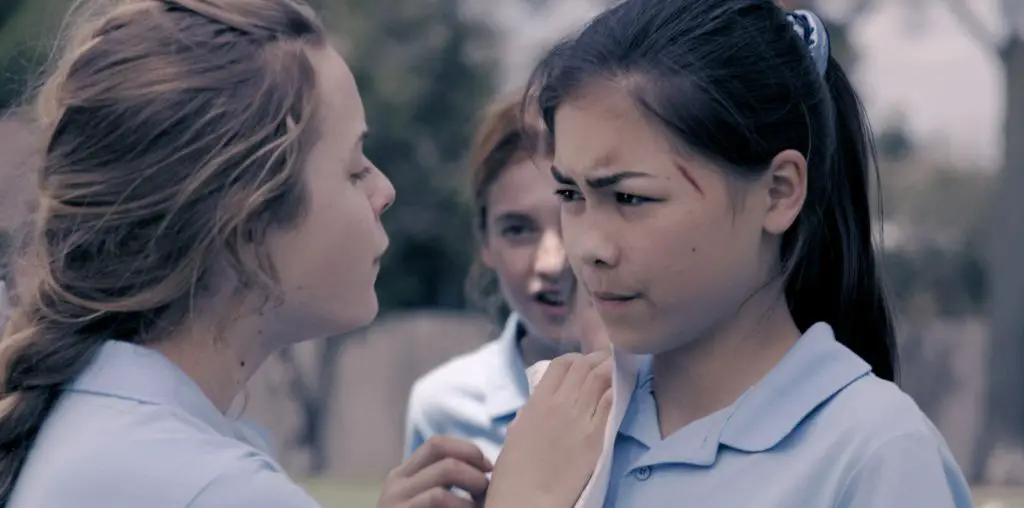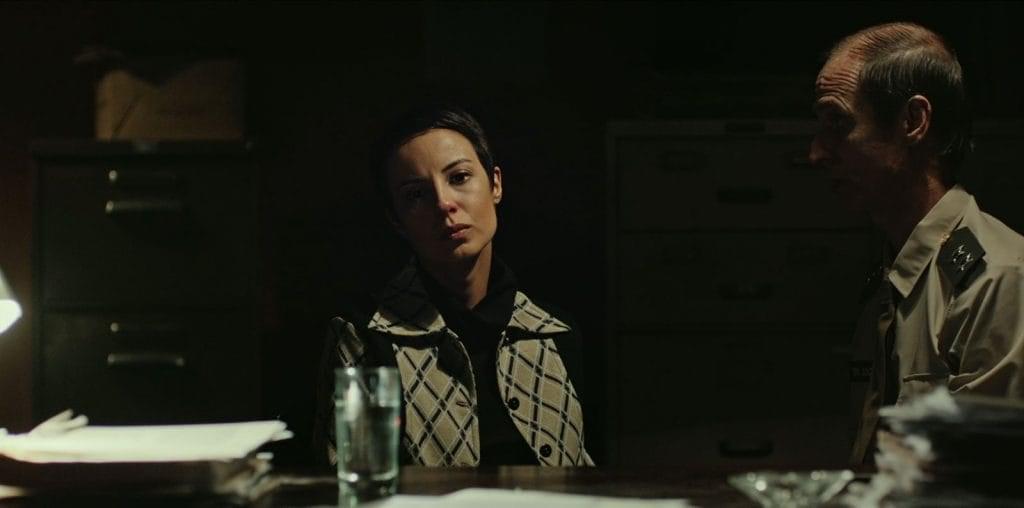
BOOTLEG FILES 452: “A Streetcar Named Desire” (2005 film version of the Tennessee Williams classic, produced by North Carolina high school students).
LAST SEEN: It is on YouTube.
AMERICAN HOME VIDEO: None.
REASON FOR BOOTLEG STATUS: An unauthorized film adaptation that also pirates selections of pop and polka music for its soundtrack.
CHANCES OF SEEING A COMMERCIAL DVD RELEASE: Extremely unlikely.
Every Tennessee Williams fan knows that “A Streetcar Named Desire” has been adapted into three film versions: the Oscar-winning 1951 classic starring Vivien Leigh and Marlon Brando, and two somewhat unsatisfactory made-for-television versions starring, respectively, Ann-Margret and Treat Williams and Jessica Lange and Alec Baldwin.
However, there is a fourth film version. But you probably never heard about it unless you were attending Hickory High School in Hickory, North Carolina, back in 2005. You see, a group of teenagers at the school created their own black-and-white film adaptation of “A Streetcar Named Desire” as an extra-credit project – albeit in a significantly truncated production that ran about a half-hour. I only discovered this version the other week while spinning about on YouTube, and I was happily surprised to locate this obscurity.
From the opening credit sequence, it becomes obvious that this is a “Streetcar” for the 21st century – the post-World War II neuroses of Williams’ drama are exorcized completely in favor of contemporary self-confidence. Blanche DuBois is seen strutting down the streets of a business district, wearing a sharp white dress. She walks with an air of insouciance, while the soundtrack fills with the old pop classic “The Girl from Ipanema.” Meanwhile, Stanley Kowalski and his posse are seen strutting along a railroad track while “Bad to the Bone” blares on the soundtrack.
Blanche arrives at the home of her sister Stella and brother-in-law Stanley. The Kowalskis live in a well-maintained condo development, and their residence displays evidence of middle-class comfort (including a widescreen television and gym equipment in the living room). Stella arrives, and she is wearing a polka dot dress and a wide-brimmed hat. The hat remains on her head for much of the film, even though nearly all of the scenes take place indoors. Blanche spies a bottle of booze in the kitchen cupboard, and the soundtrack inexplicably blares out “Pennsylvania Polka.”
Stanley is not happy to have Blanche as a houseguest, or at least that’s the impression he gives. It is somewhat hard to understand just what the teenage actor playing Stanley is actually saying – his garbled voice suggests that either he has a severe cold or he is doing Buddy Hackett imitations.
Stanley hosts his pals for a poker game at his home. The all-teen cast is joined by a giggly pre-teen at the card table, and the older boys also appear to have problems avoiding eye contact with the camera and keeping a straight face during the non-comic scene.
Blanche meets Stanley’s friend Mitch, who is played by a young man with a lean, athletic physique. Actually, the teen playing Mitch is physically right for the role of Stanley – this film’s long-haired, muscle-free Stanley has a lithe physique that resembles David Cassidy in the early 1970s. This Mitch, however, is clearly aware of his appearance, as the film offers a brief glimpse of the teen actor working out in the gym.
Of course, Stanley makes a violent fool of himself and pleads for mercy with an impassioned cry of “Hey, Stella!” If the Kowalskis are able to kiss and make up, Blanche is less lucky in love.
Unlike the 1951 film version, this adaptation details Blanche’s doomed marriage to a closeted homosexual. In a flashback, we learn about Blanche’s honeymoon: she is lying in bed (still wearing that white dress she wore since the opening credits) while her husband unbuttons his shirt to Enrique Iglesias’ tune “Hero.” He is revealed to be wearing a white t-shirt under his shirt, but he stops undressing and gets into bed while he is still wearing his pants and shoes. He rolls over, claps his hands, and the lights go off.
Blanche then recalls discovering her husband’s homosexuality: she walks into the bedroom and discovers her mate standing five feet away from another man. The interloper looks at the camera, turns around, pulls down his pants and shakes his bare backside at the viewer. After this comes a dance sequence, with several teens doing a wild two-step to “Pennsylvania Poker.” This seems to go on forever until the young actor playing Blanche’s husband abruptly runs off-screen, at which point gunshots are heard.
Of course, things get worse for Blanche, culminating in Stanley’s sexual attack. This begins when Stanley slowly disrobes while “I’m Too Sexy for My Shirt” plays on the soundtrack. Mercifully, the grisly details of the rape are not presented: Stanley picks up Blanche, tosses her off-screen as if he was throwing a medicine ball, and then takes a Superman-worthy leap after her.
By the end of the film, Stanley’s pals are back for another game of cards. Stanley is singing “Put the Lime in the Coconut” while Blanche is chased around the residence by the people who are tasked to take her to a mental hospital. After Blanche surrenders herself to the kindness of these unlikely strangers, the film abandons the black-and-white format and switches to color for the last 15 seconds of the running time.
It is obvious that the film was made for a school audience: the brutality of the Williams text is erased by both the excessive editing to fit the shortened running time and by the polite nature of the acting. Indeed, the performances are so low-key that Blanche’s cries of “Fire!” are delivered in the tone of voice that one associates with an elderly cat owner summoning her feline for dinner.
However, the film compensates for its hack-chop editing and mild-mannered acting by offering a wealth of questions that provoke the viewing audience: Why is Stella always wearing a hat in her home? Who owns the black dog that shows up unannounced and walks through one of the scenes? Why do Mitch and Blanche have a lengthy conversation while standing in a dark hallway? What does “Pennsylvania Polka” have to do with a New Orleans-based drama? And, of course, whatever happened to the streetcar?
Still, these spunky teens deserve praise for attempting such a project. A great deal of time clearly went into the film’s creation, and it is difficult not to be impressed by the film’s charming daffiness.
I suspect that no one at Hickory High School bothered to clear the film rights with Williams’ estate or the music licensing rights with the various entities featured on the soundtrack – thus, any home entertainment release seems thoroughly unlikely. Happily, one of the cast members posted “A Streetcar Named Desire” on his YouTube page, and fans of student filmmaking and the gloriously absurd should take the time to seek it out. If anything, this “Streetcar” go places that Tennessee Williams would never have imagined.
IMPORTANT NOTICE: The unauthorized duplication and distribution of copyright-protected material, either for crass commercial purposes or profit-free s***s and giggles, is not something that the entertainment industry appreciates. On occasion, law enforcement personnel boost their arrest quotas by collaring cheery cinephiles engaged in such activities. So if you are going to copy and distribute bootleg material, a word to the wise: don’t get caught. Oddly, the purchase and ownership of bootleg DVDs is perfectly legal. Go figure!

